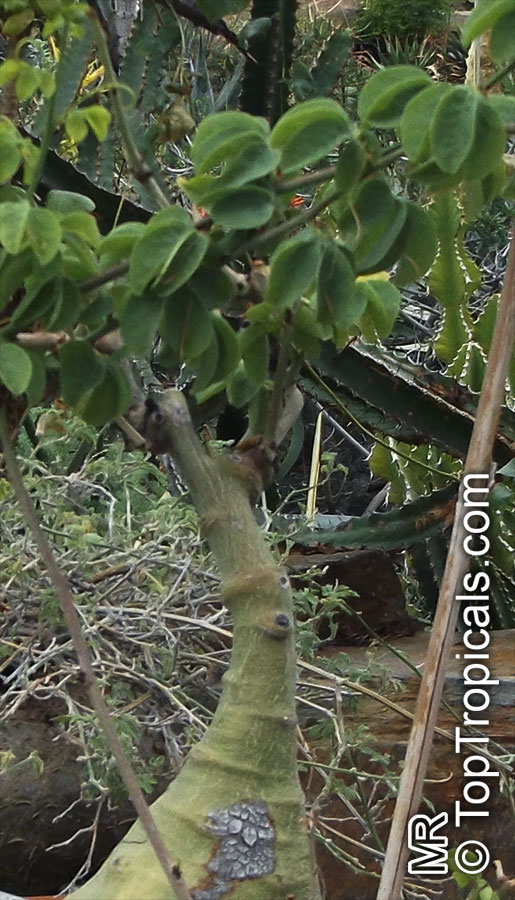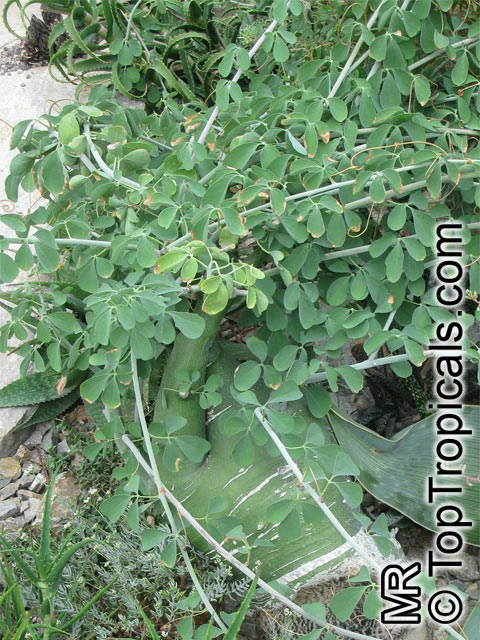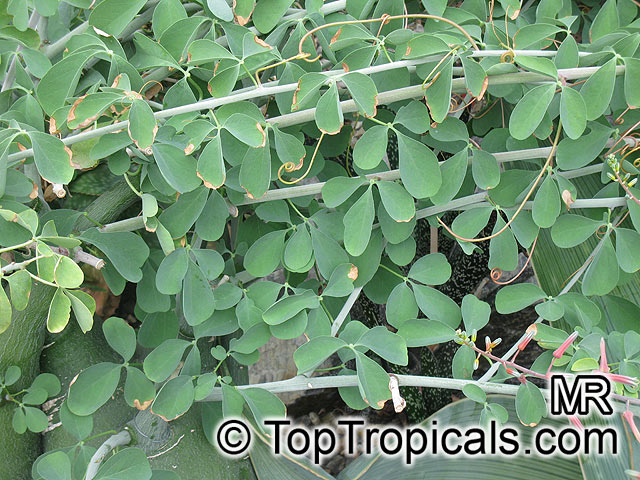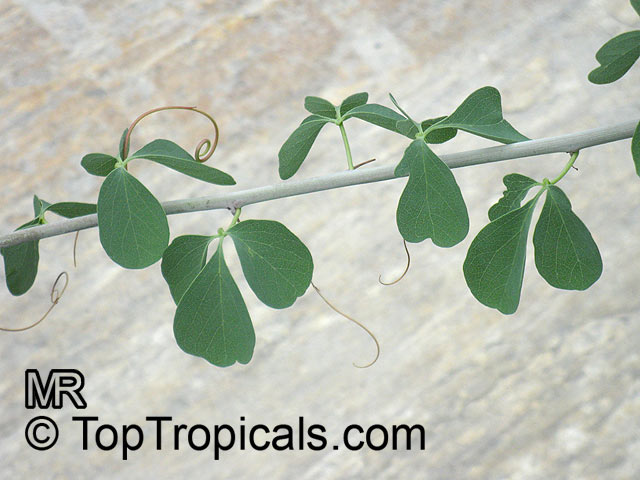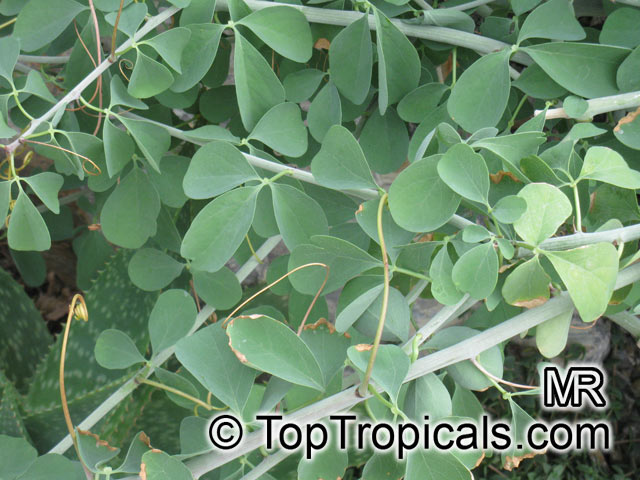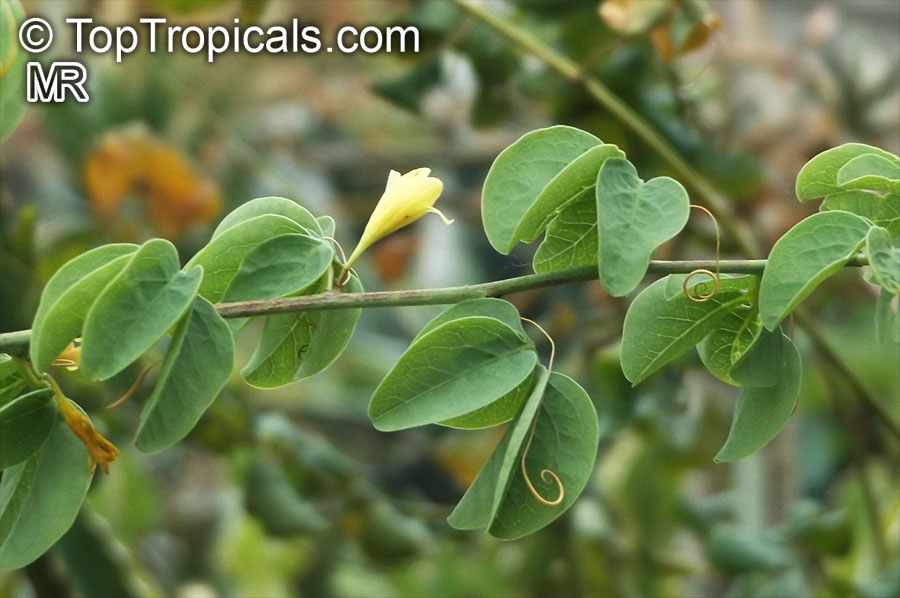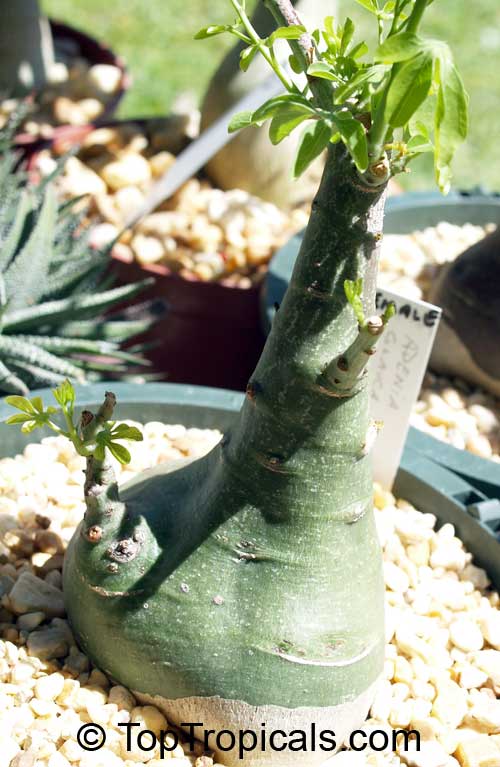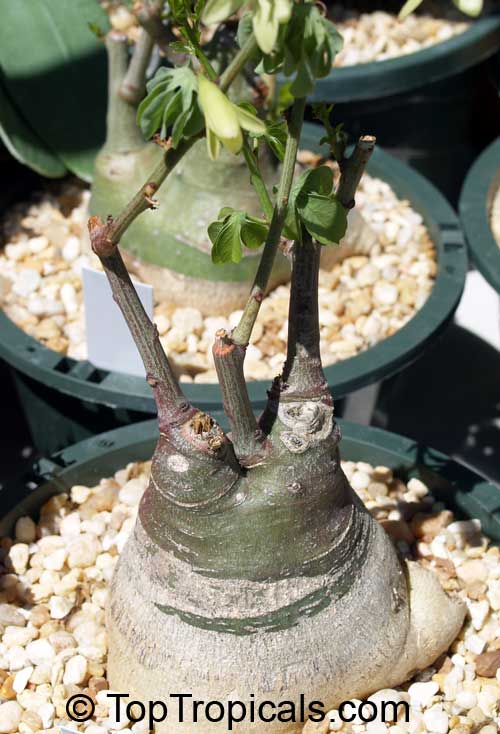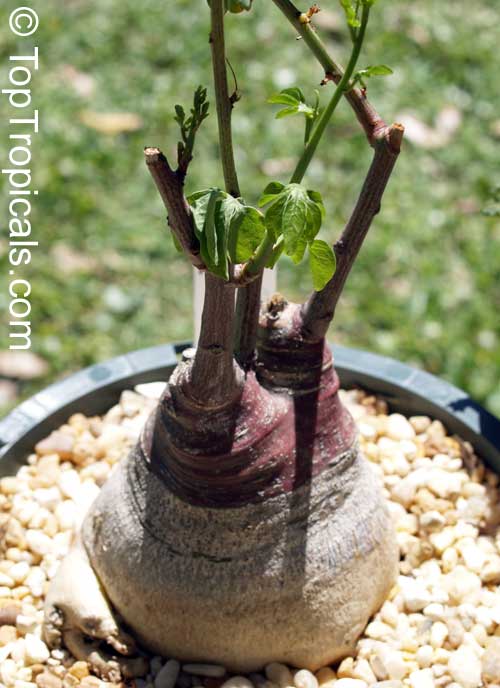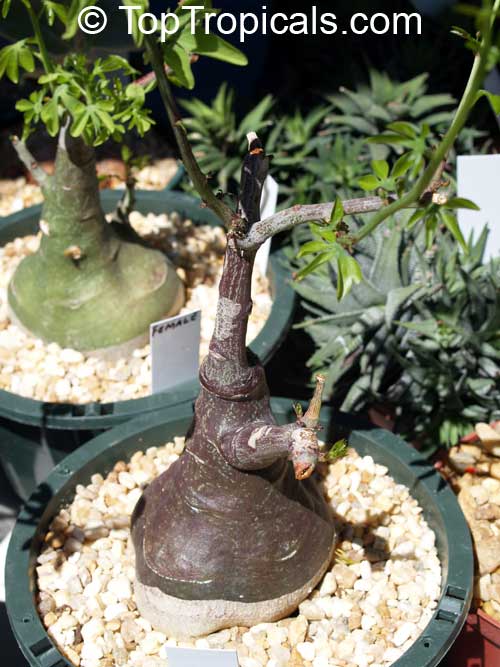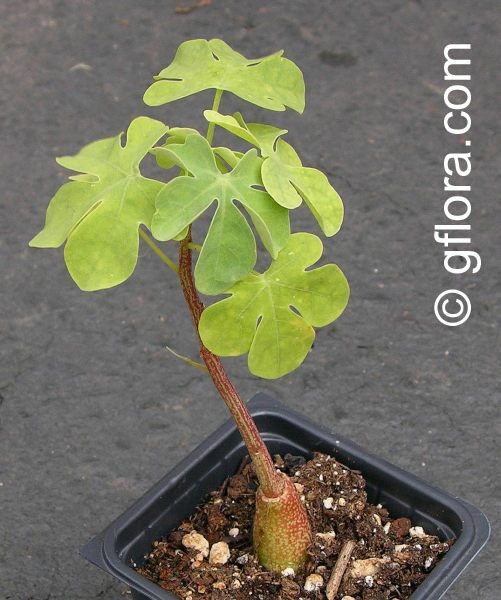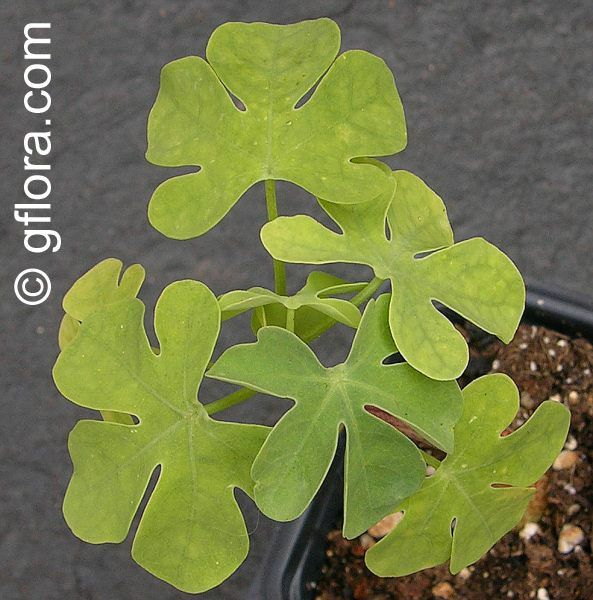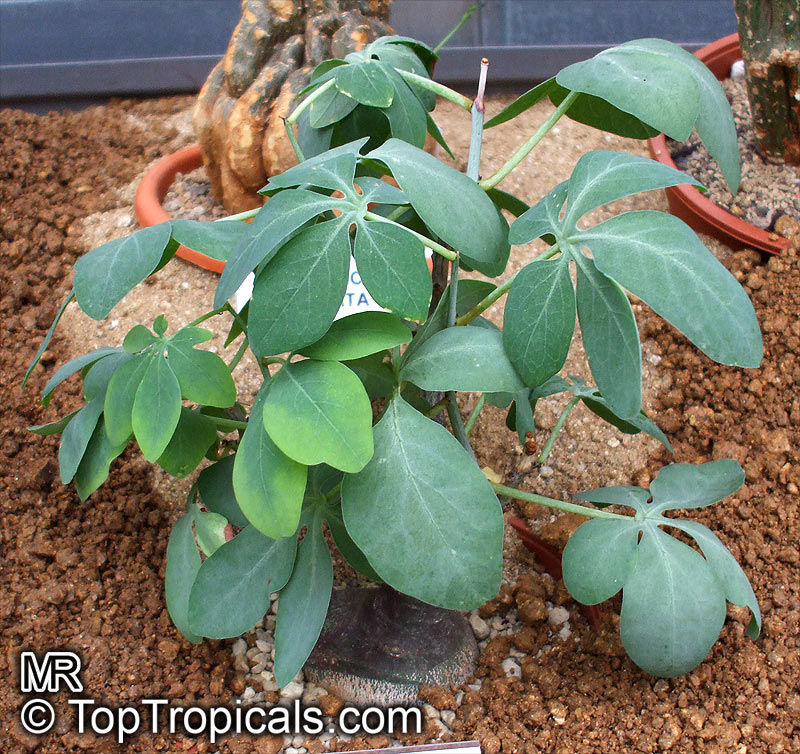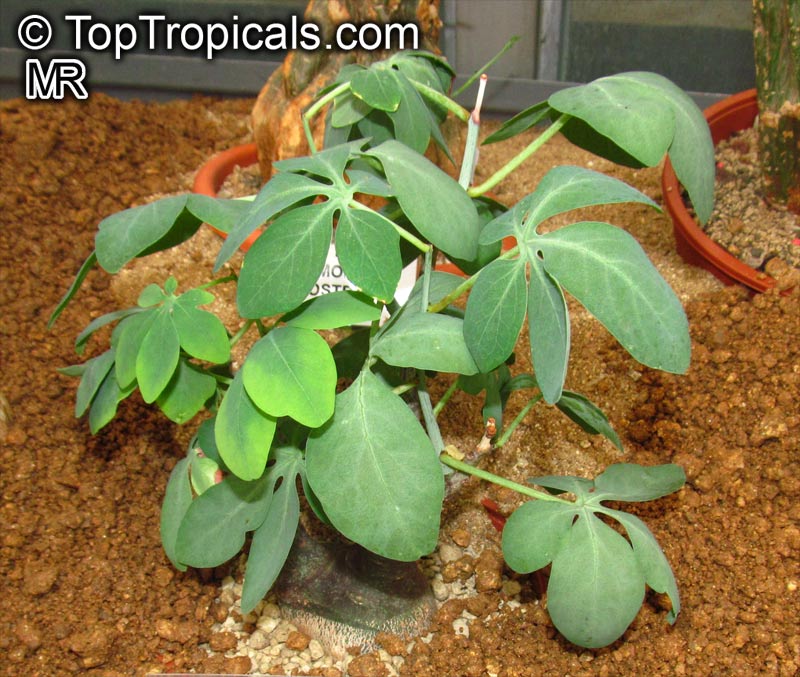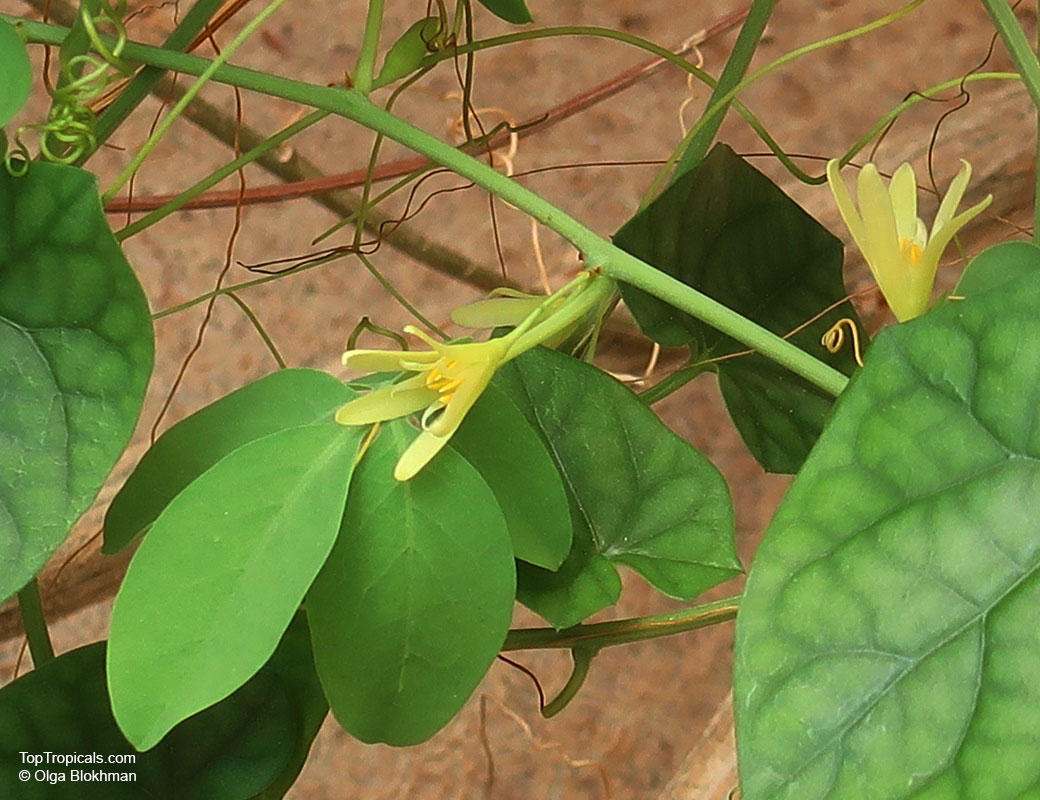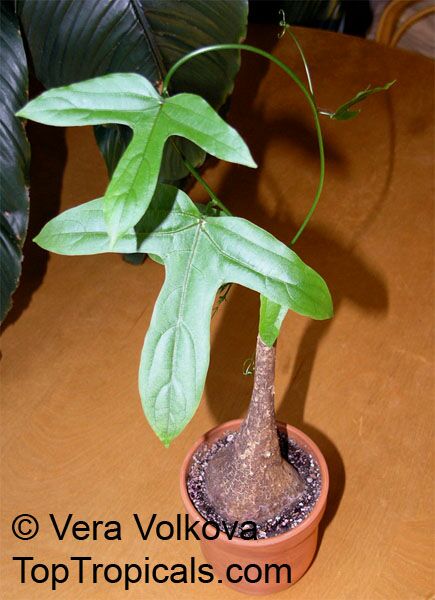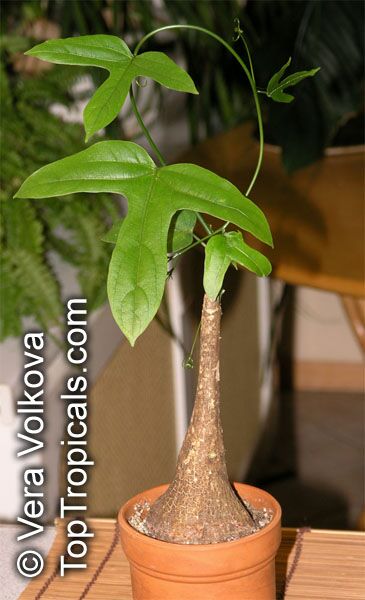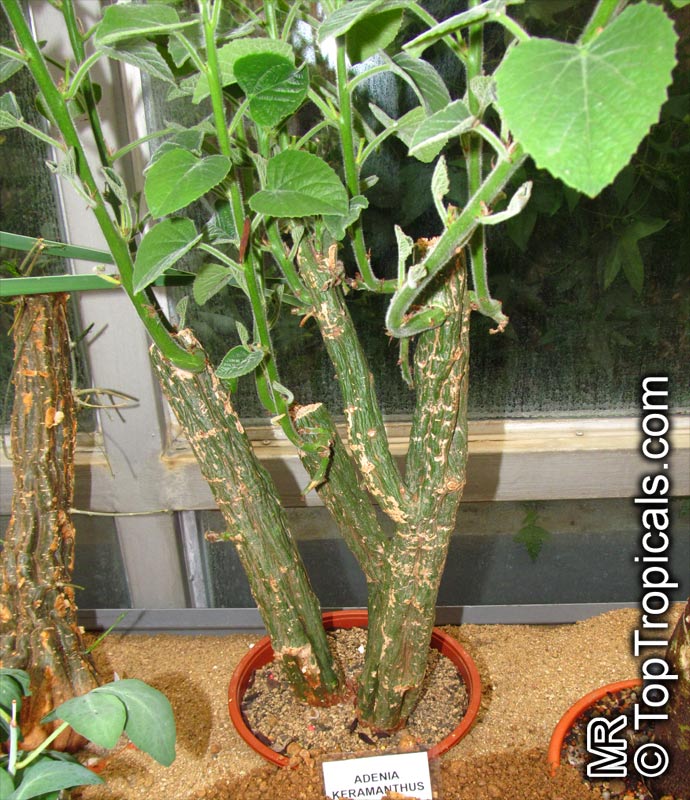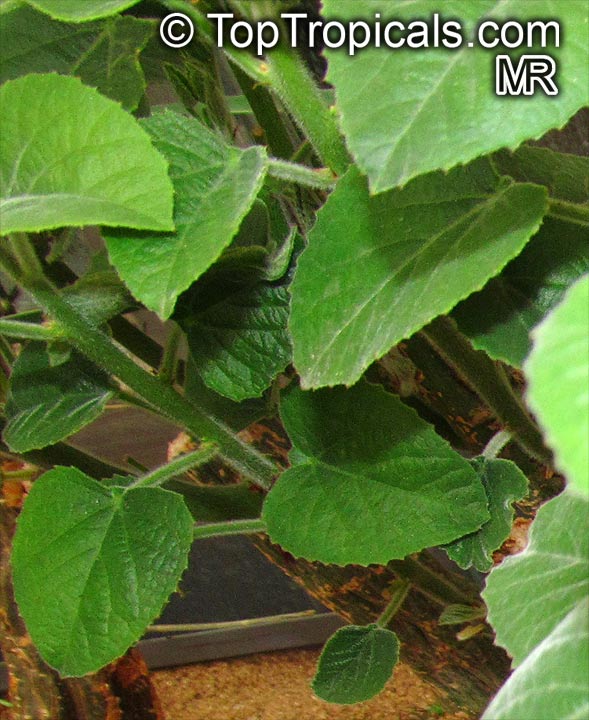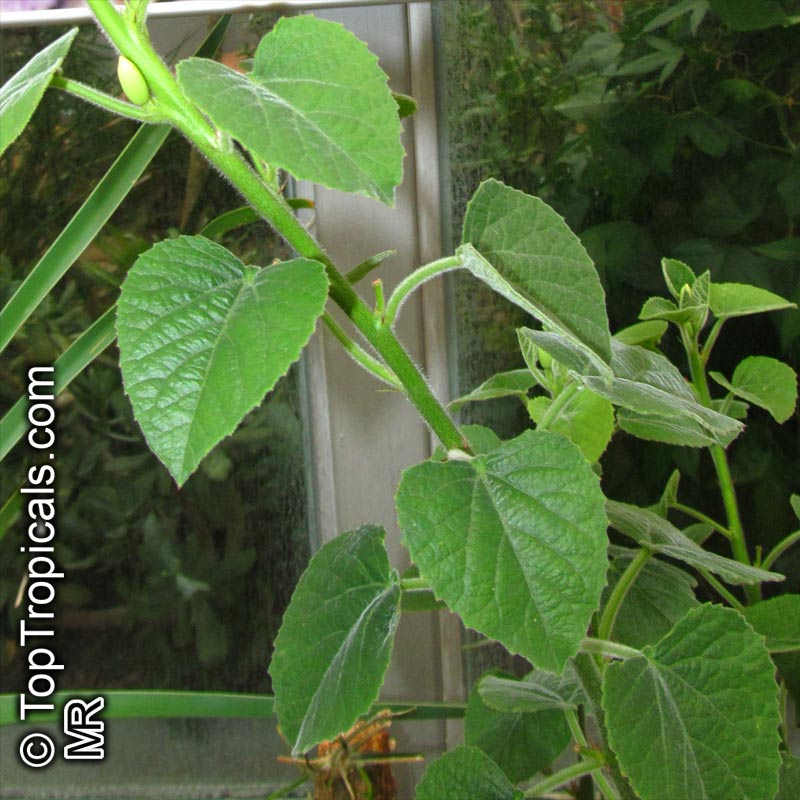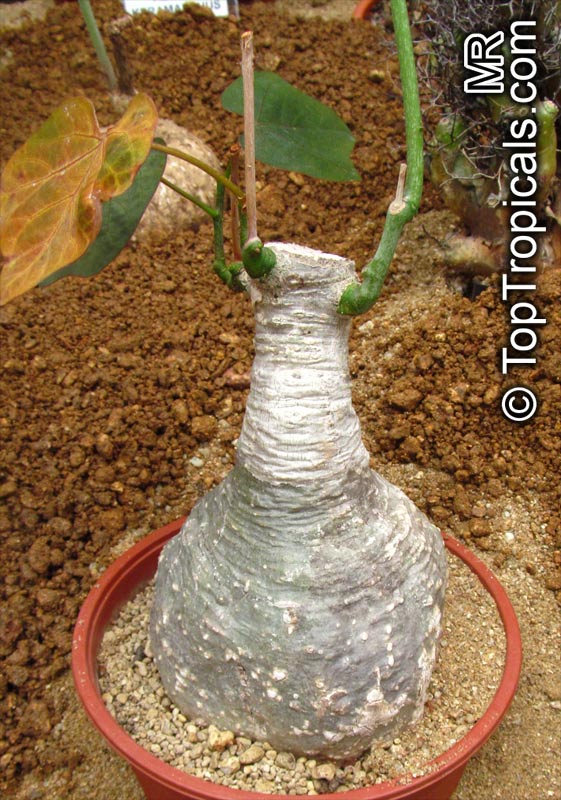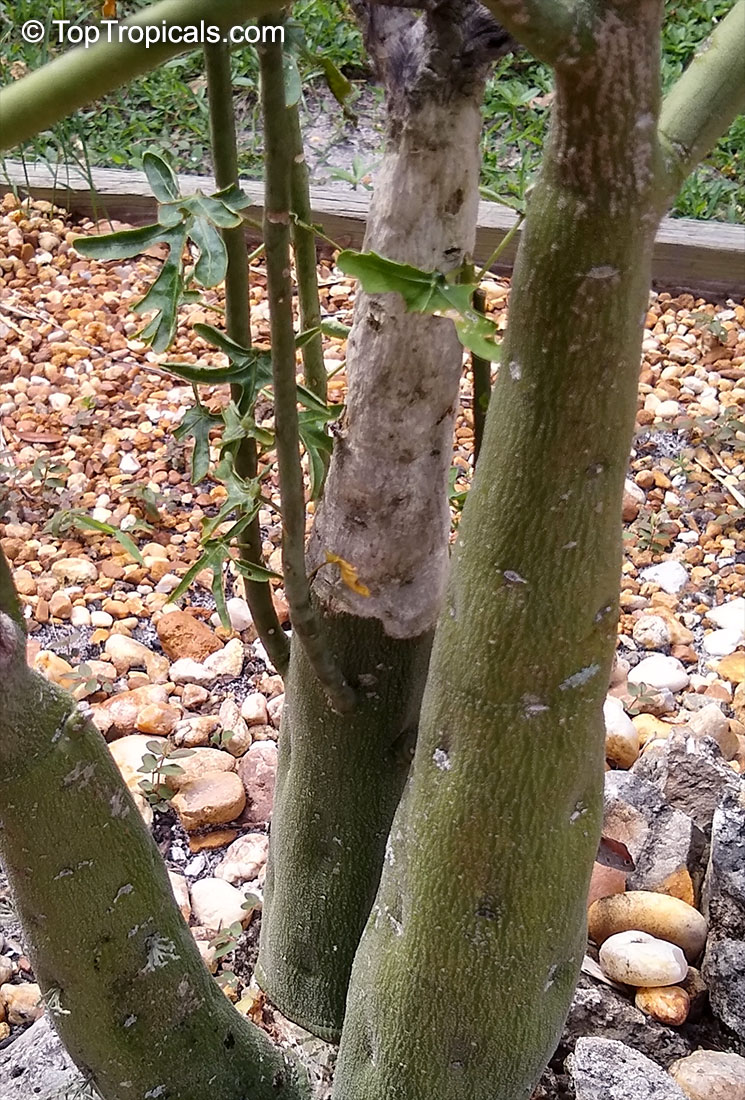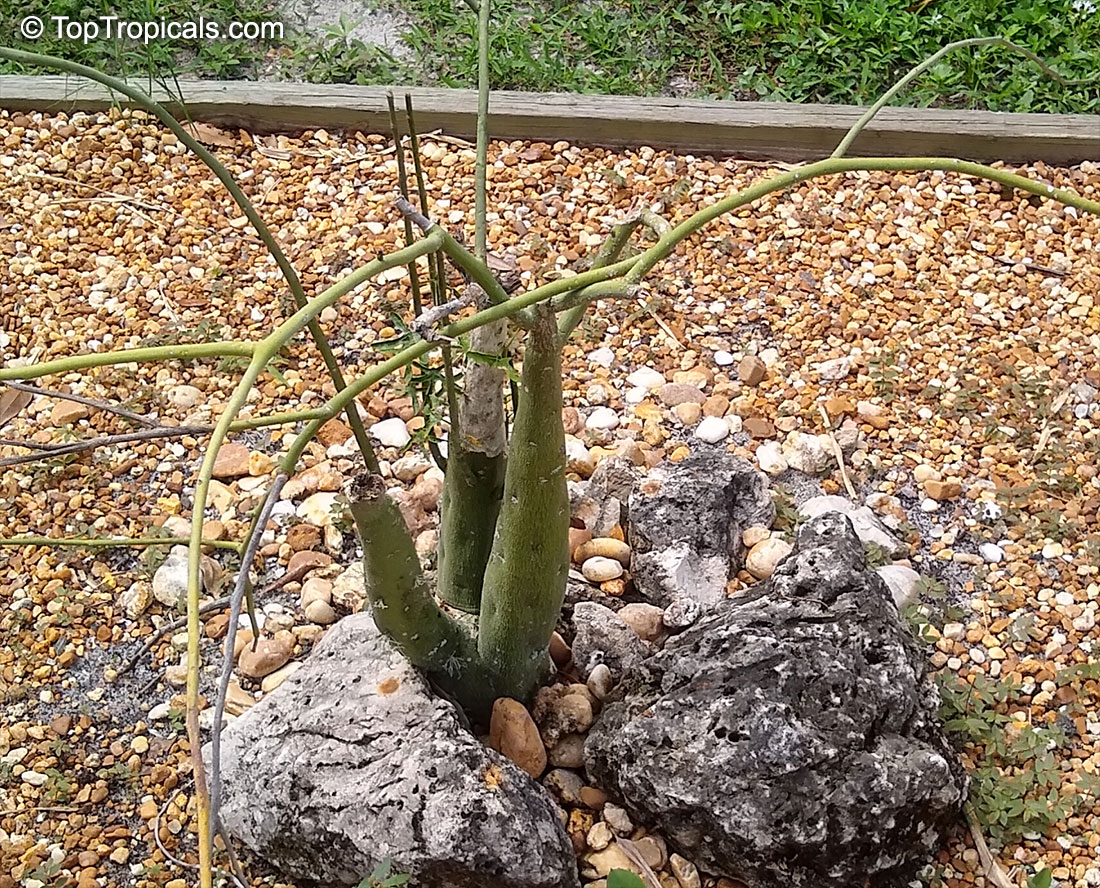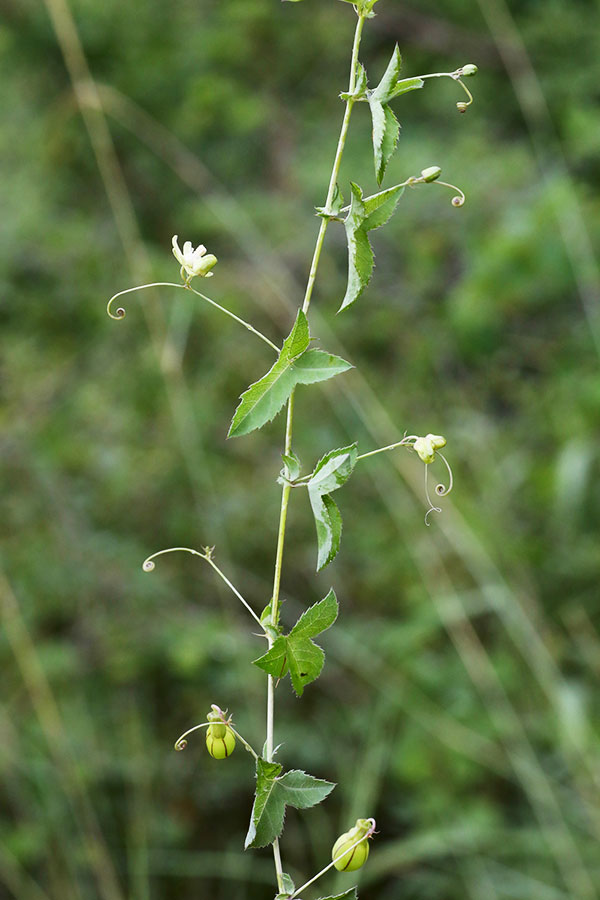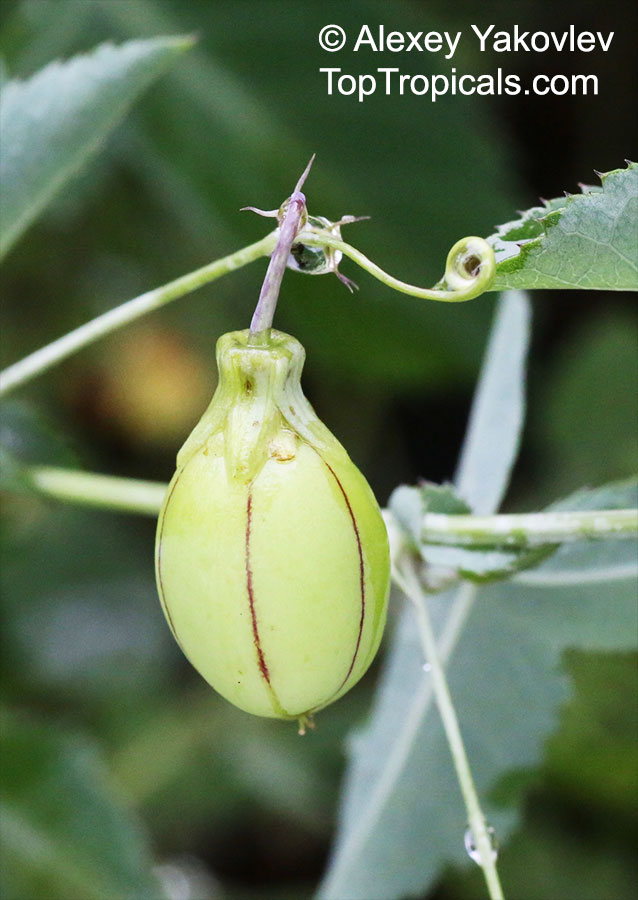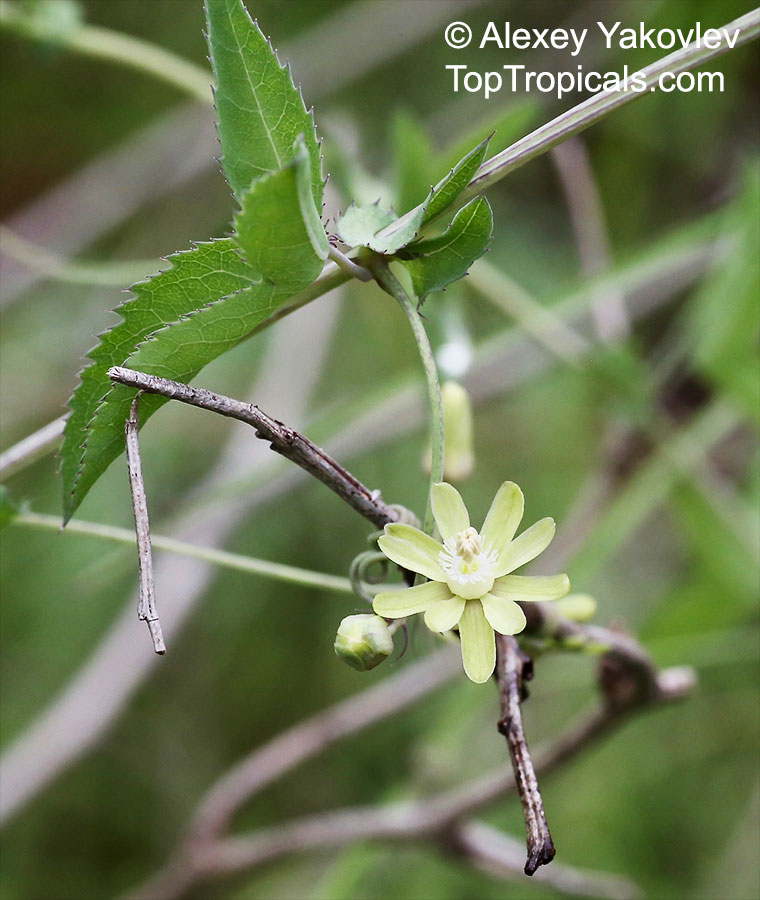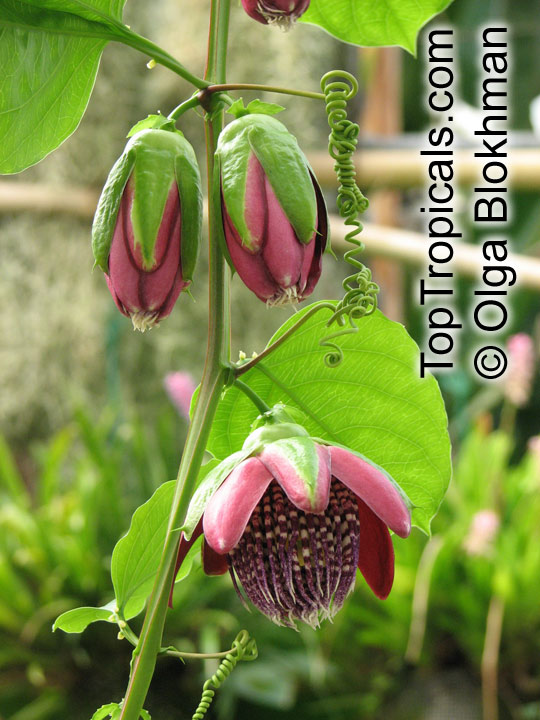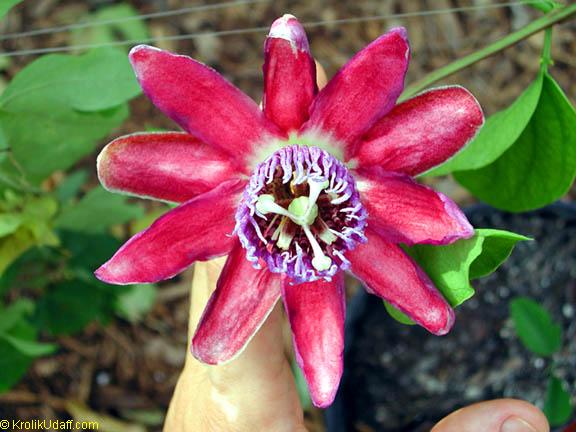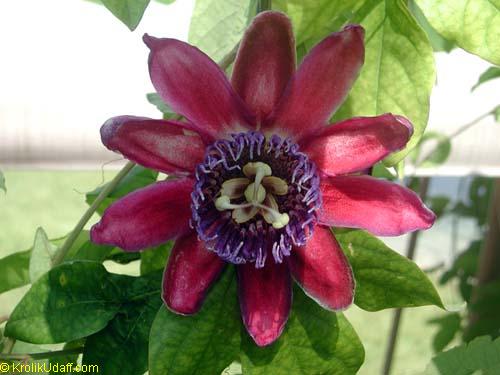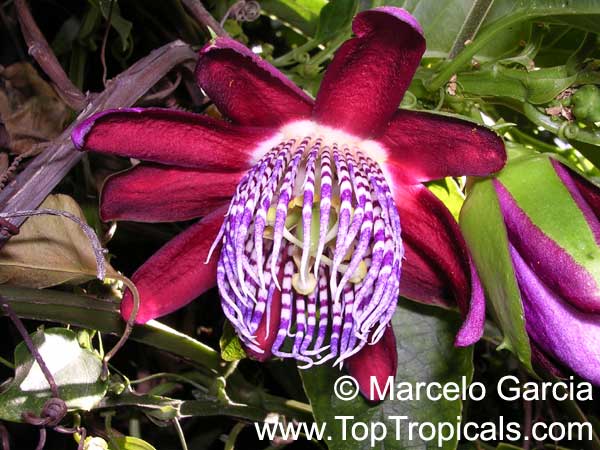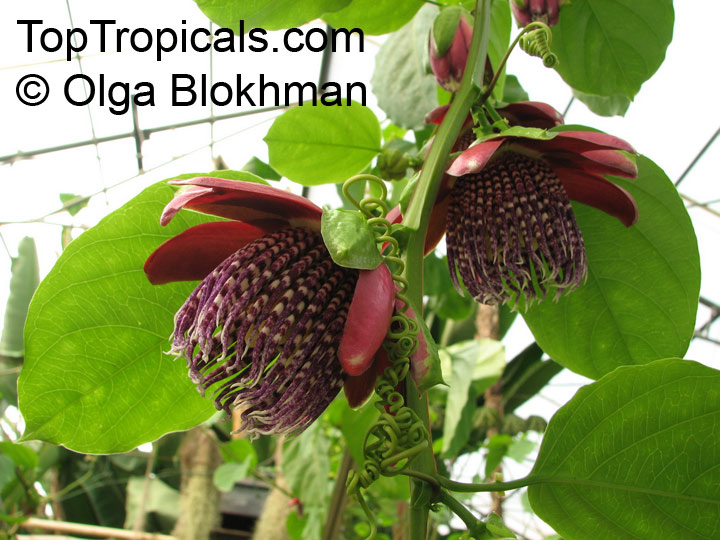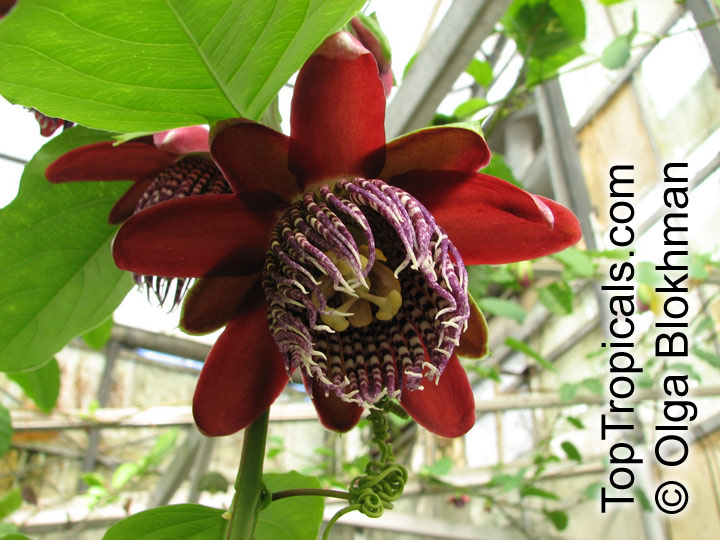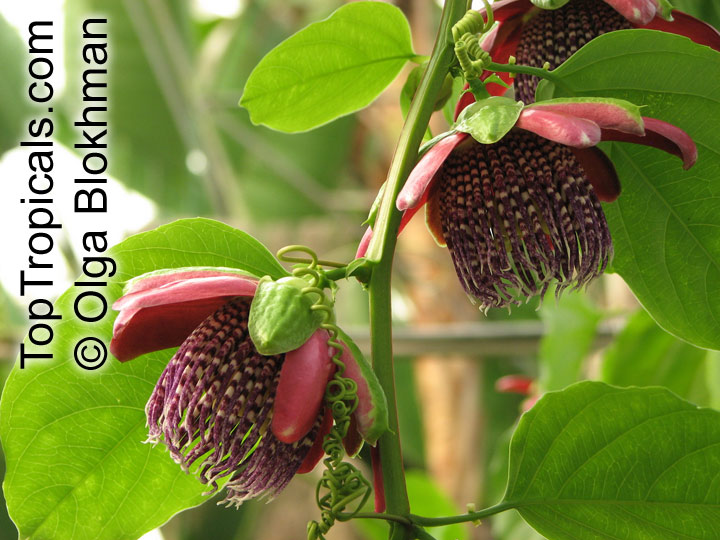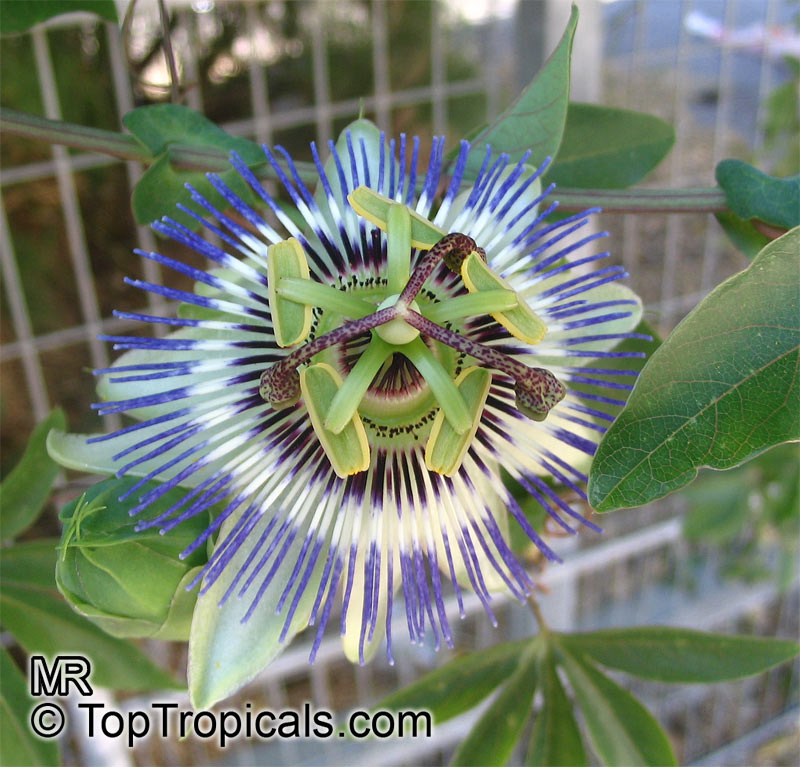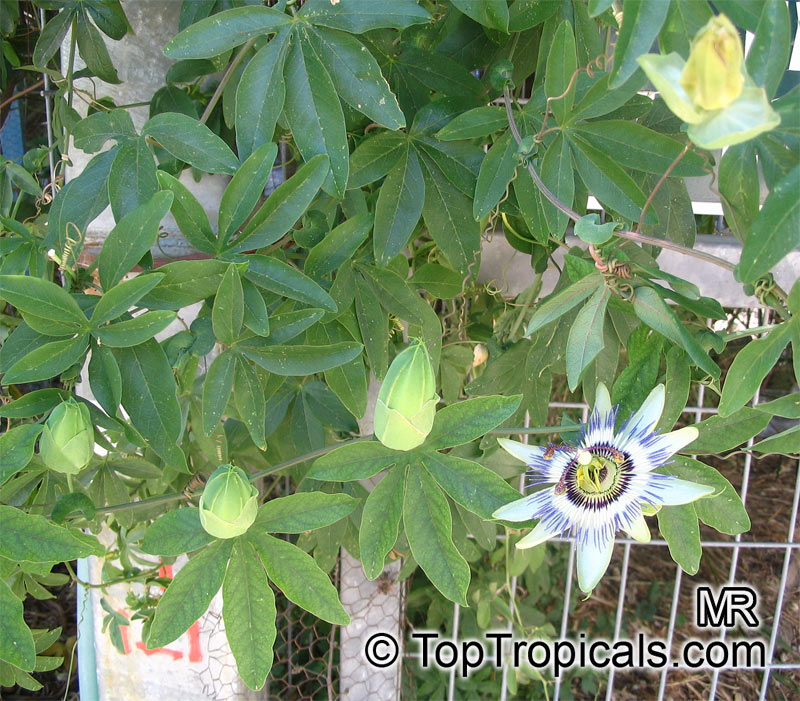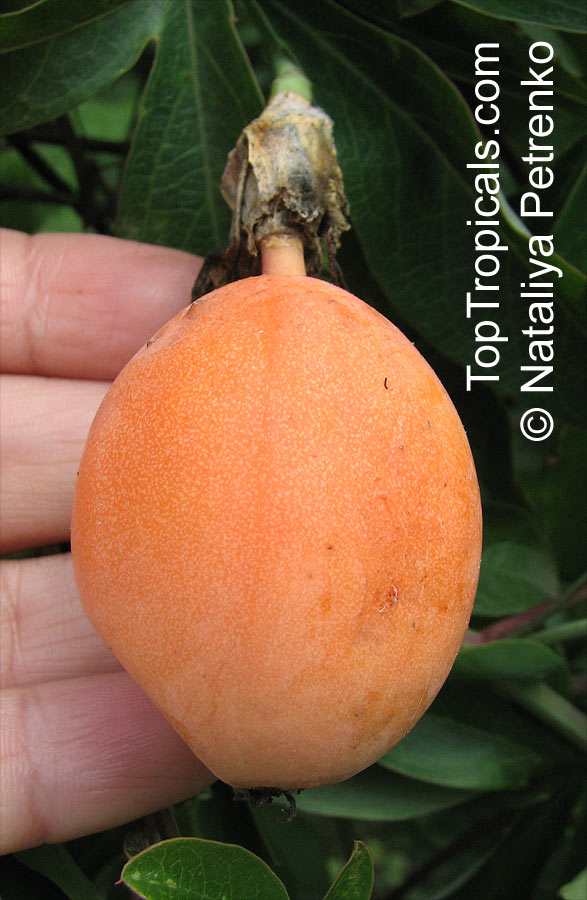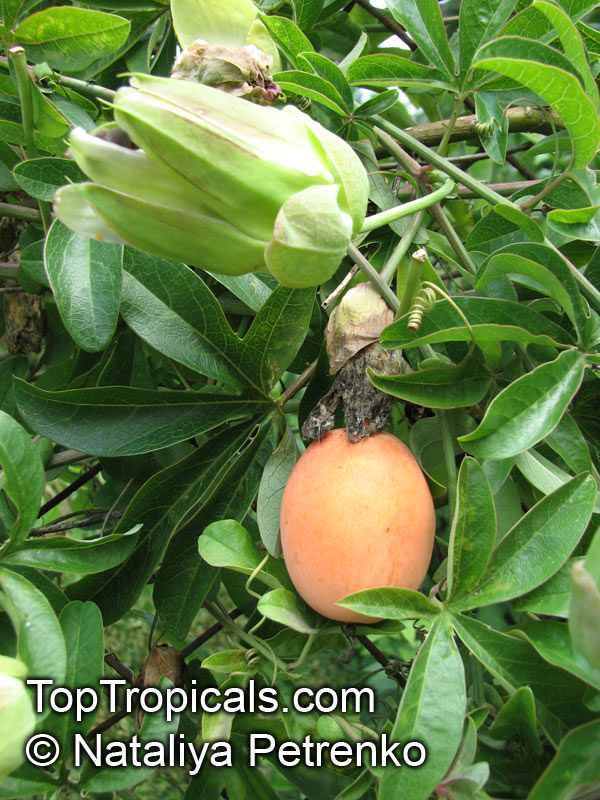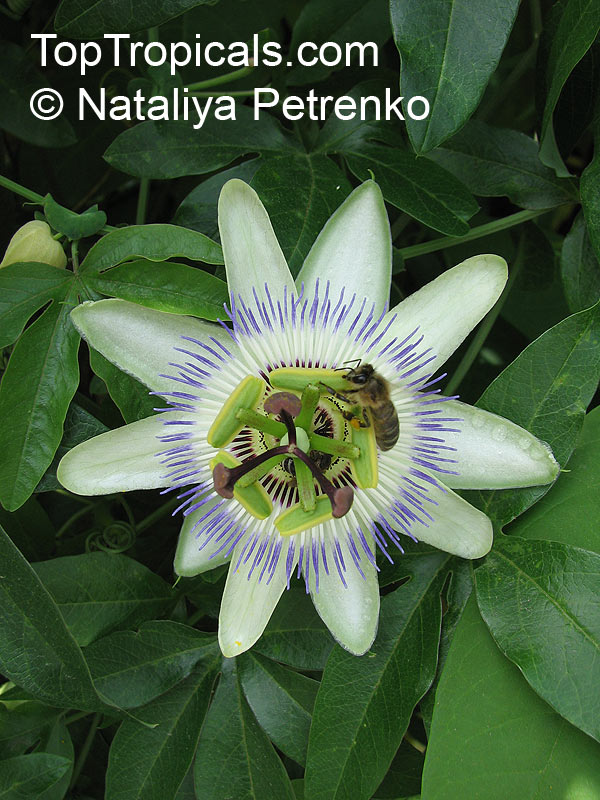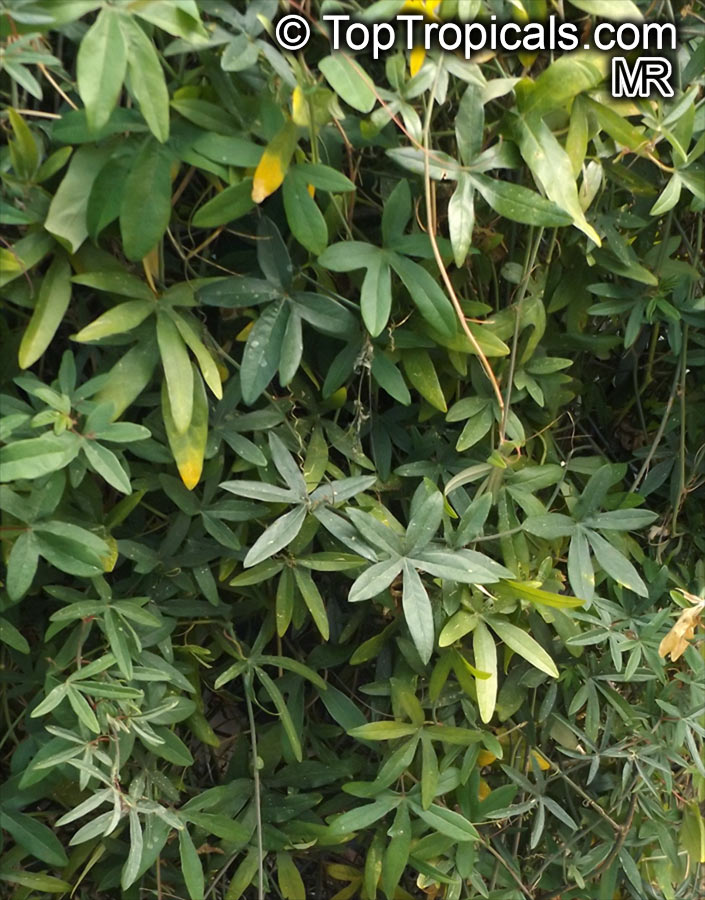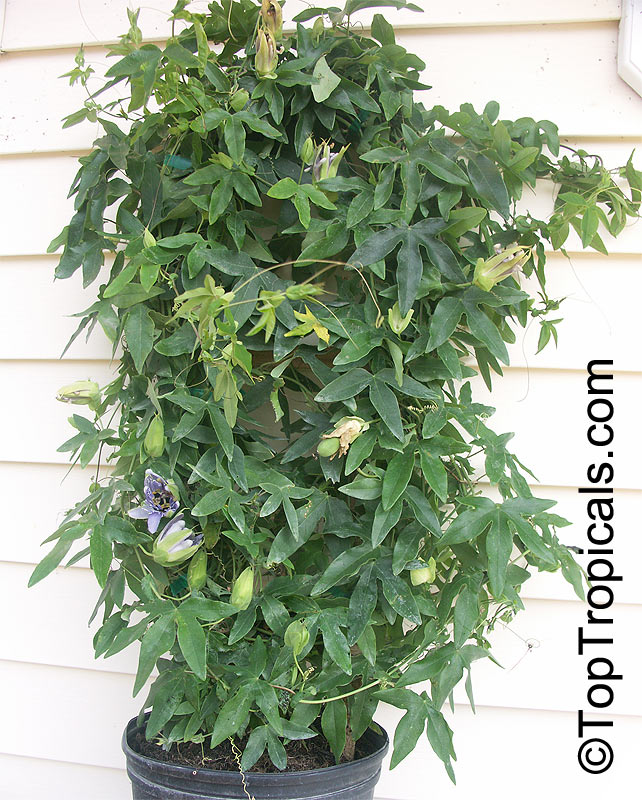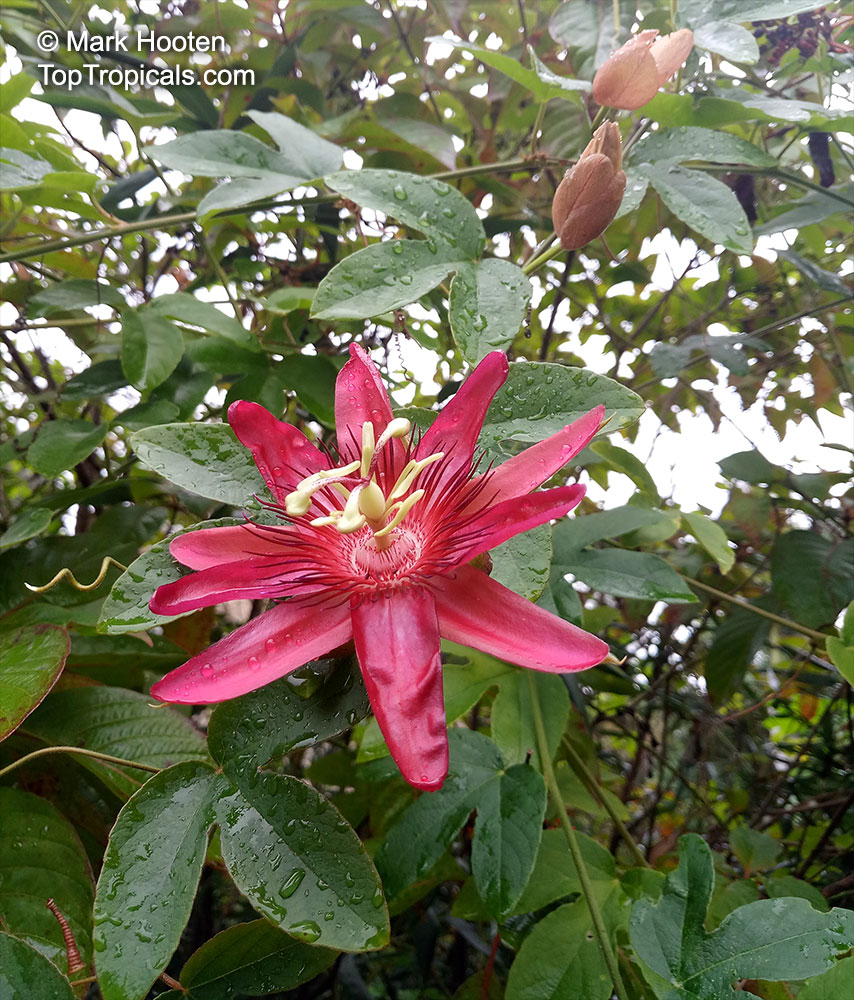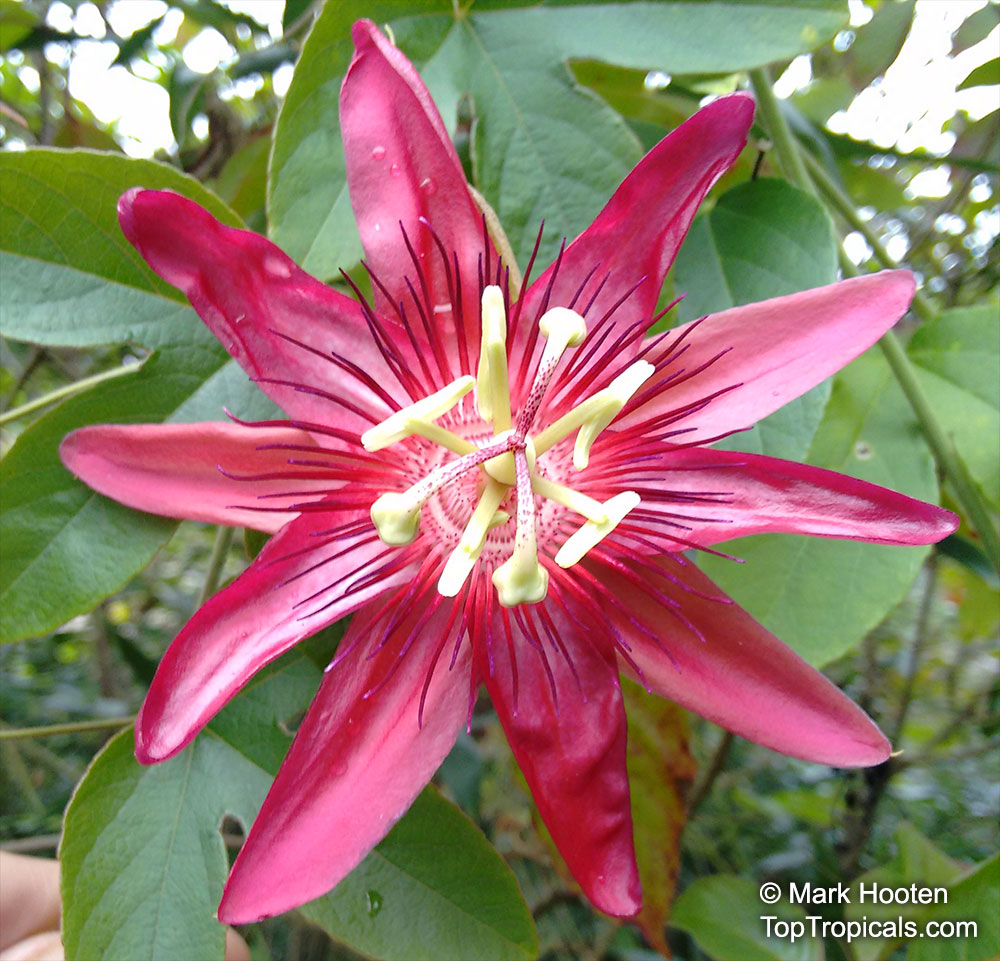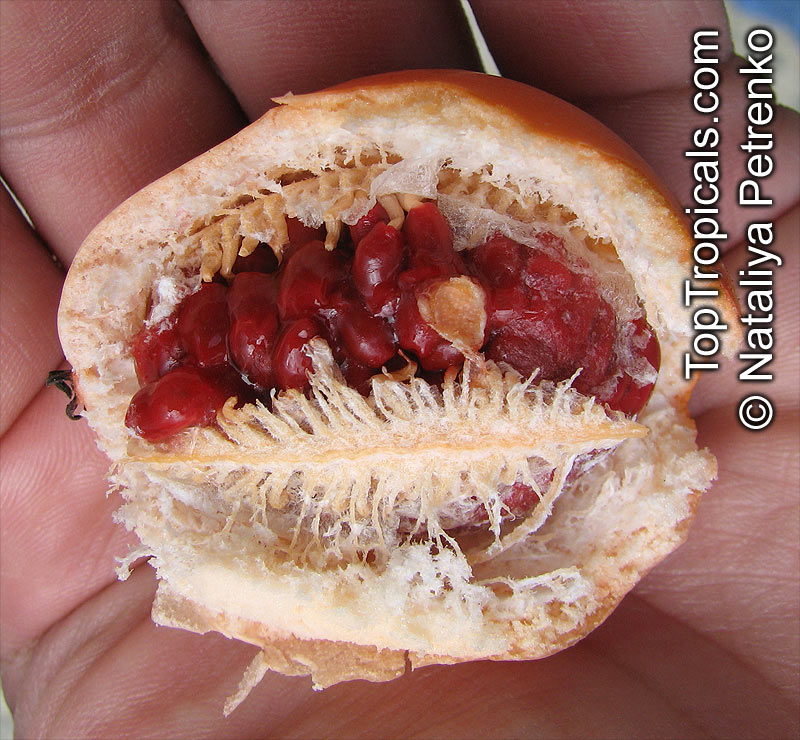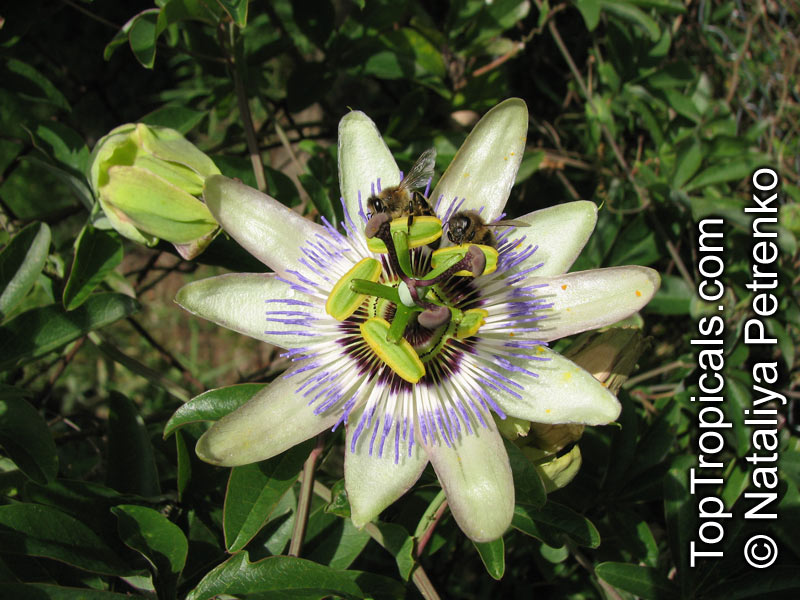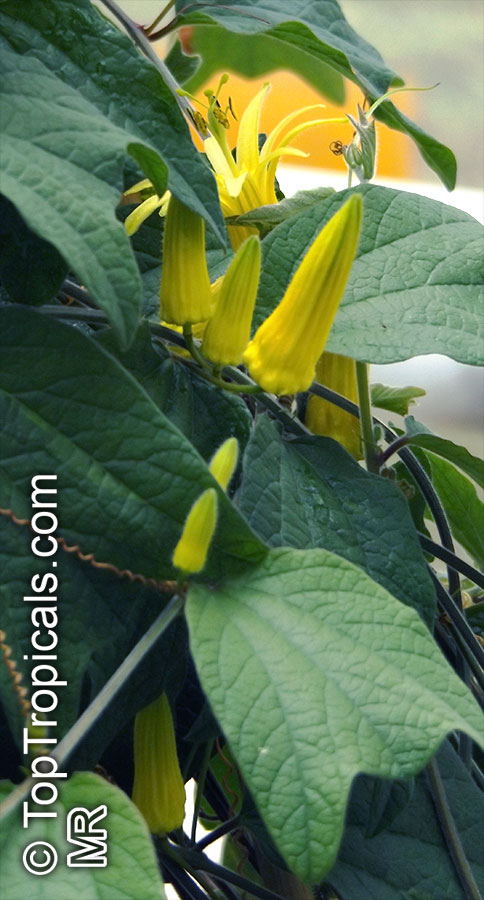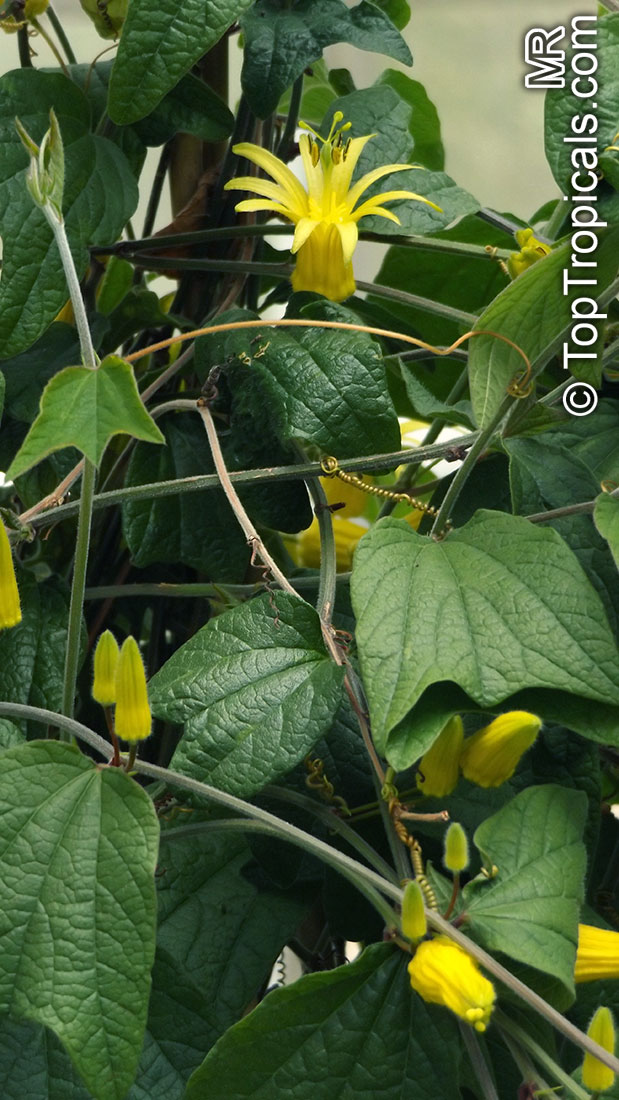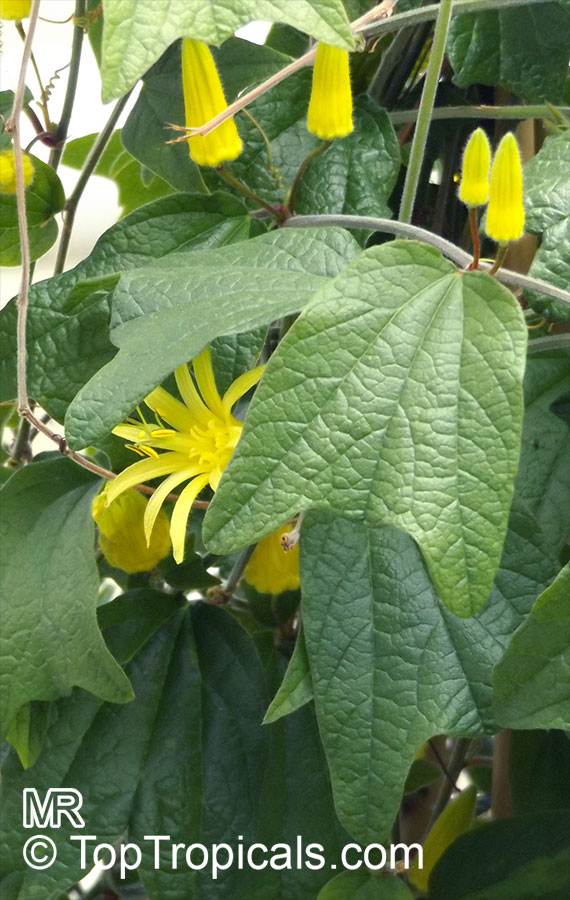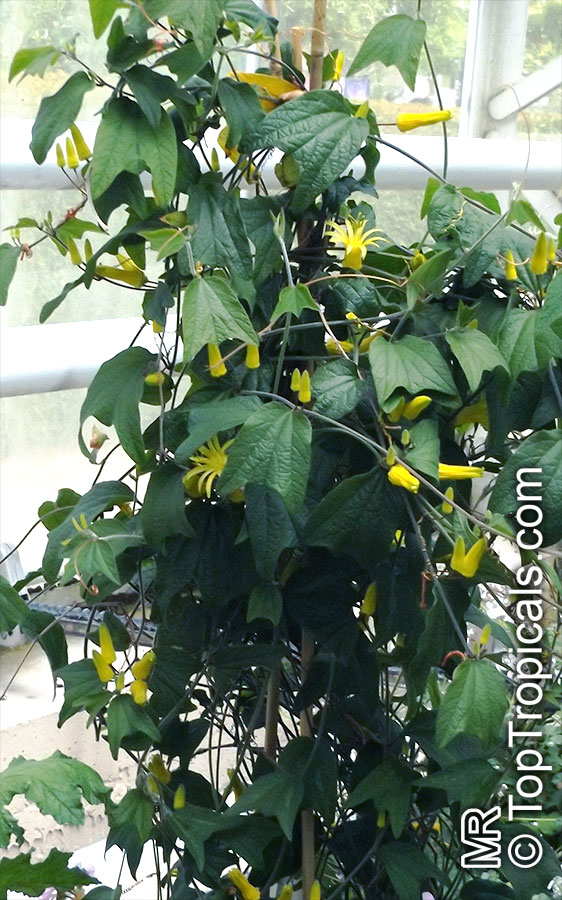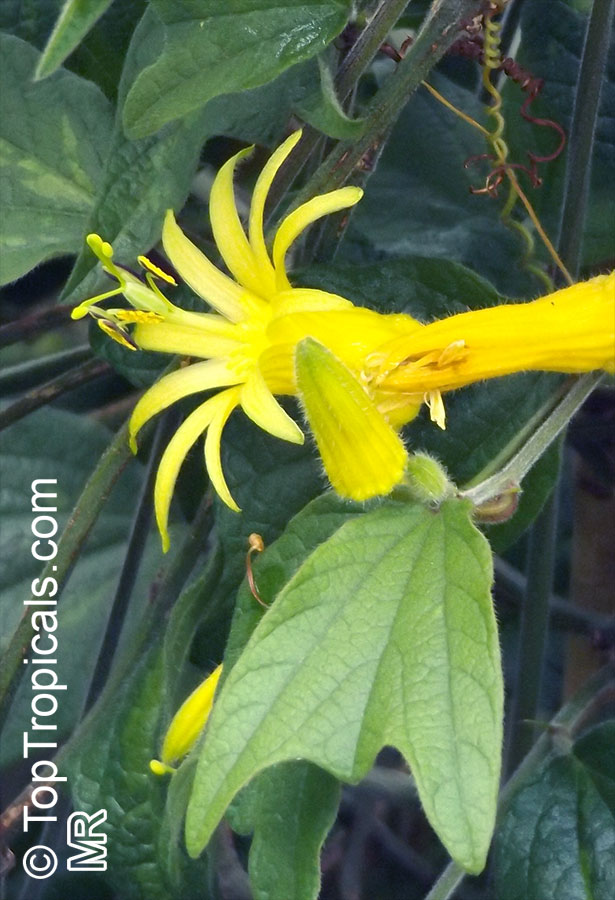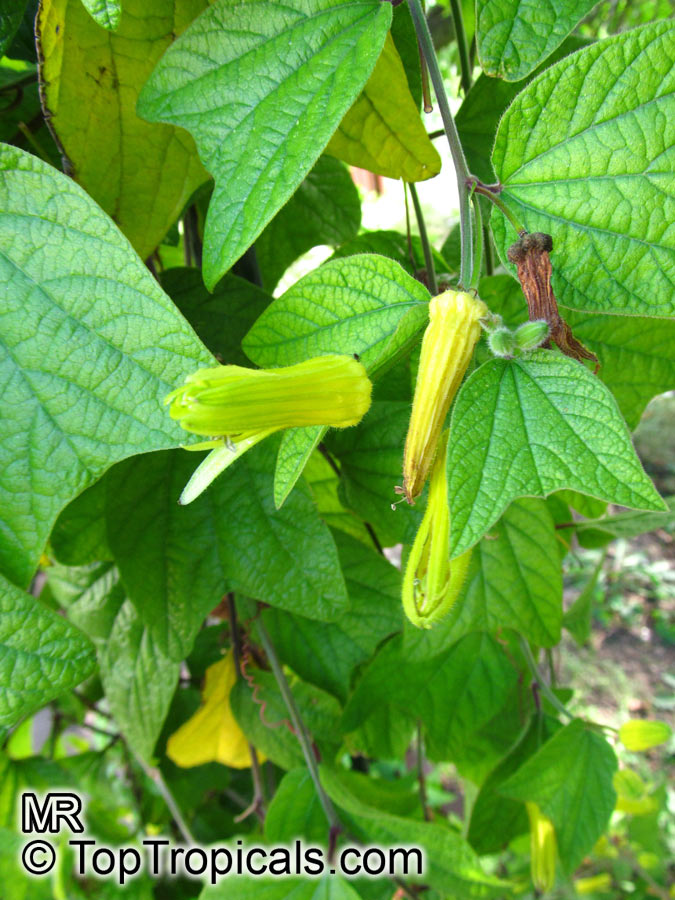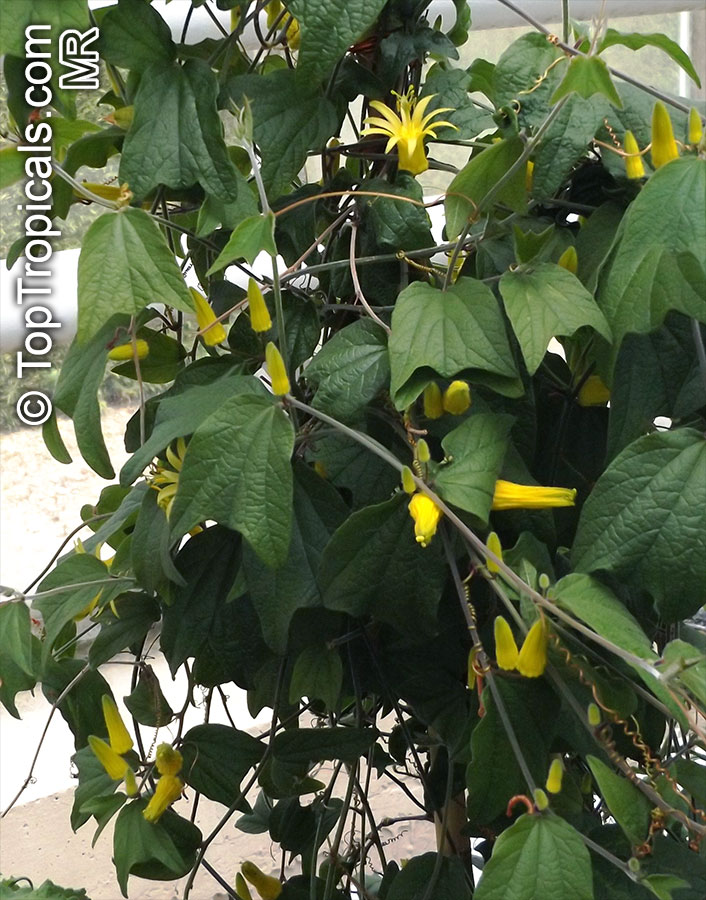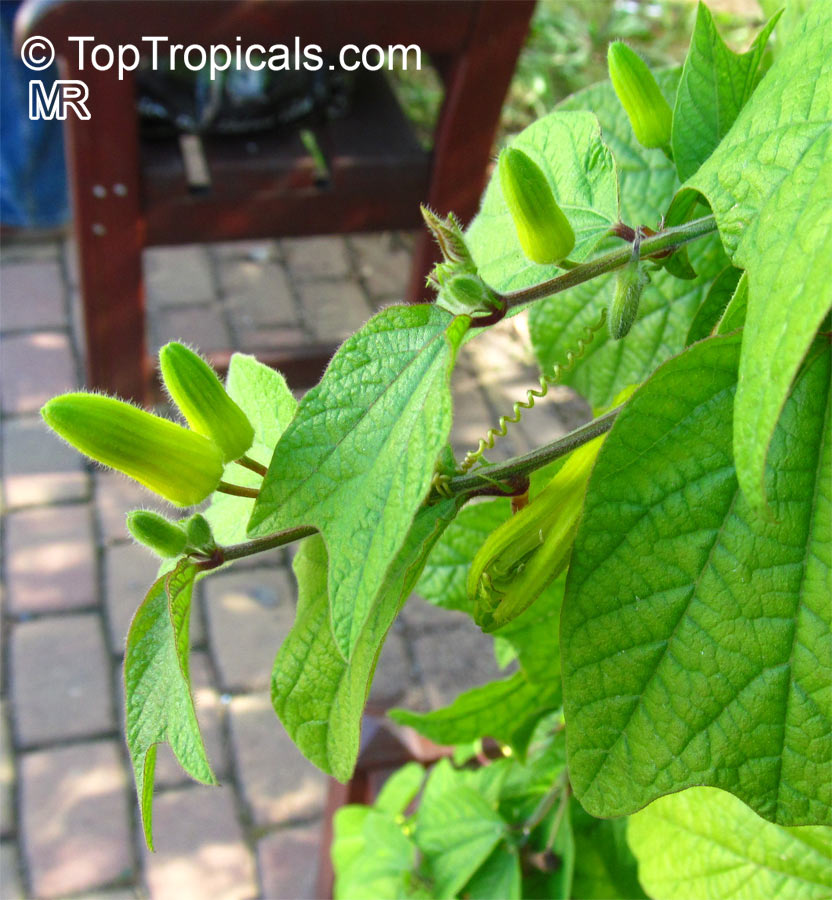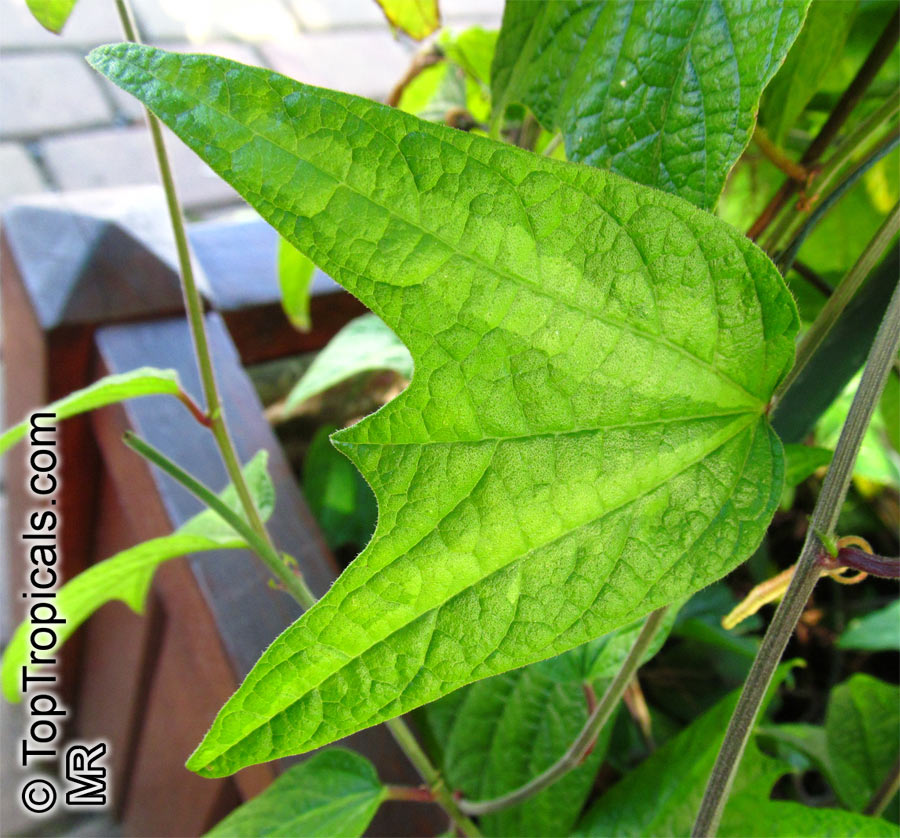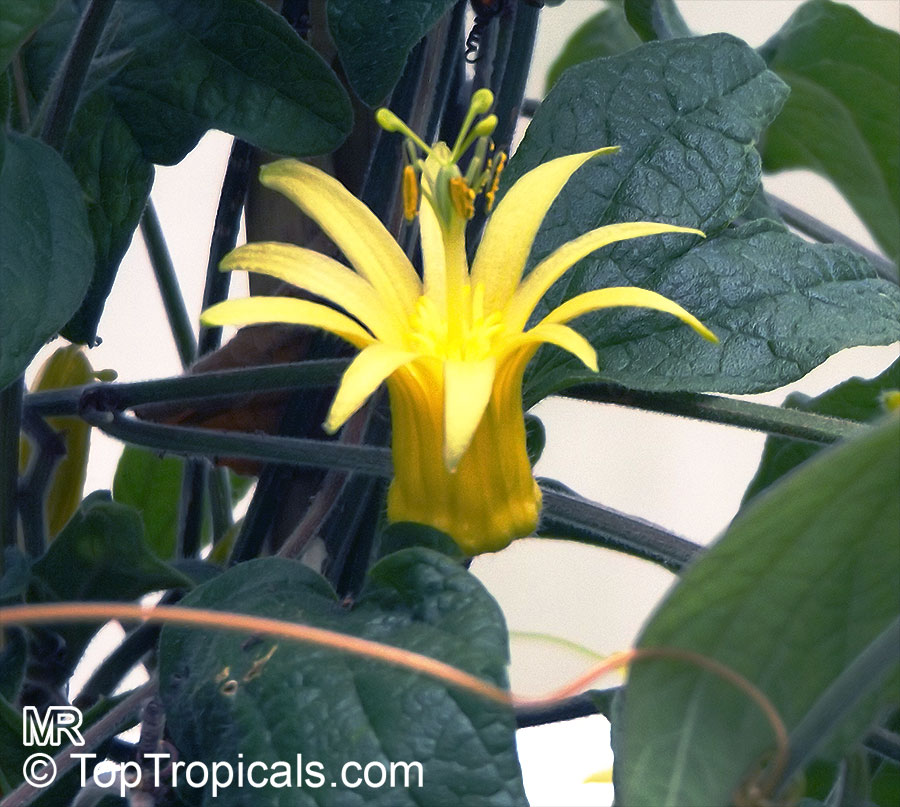Passifloraceae - Botanical Family
Top Tropicals Plant Encyclopedia
| Number of plants found: 29 | Next | 
|
Go to page: | 1 | 2 | 3 |
Botanical name: Adenia glauca
Common name: Adenia
Family: Passifloraceae
Origin: Southern Africa, Botswana








This is a mature plant, it has a very thick, green caudex. The flowers are lemon colored, and are sweetly scented.
Botanical names: Adenia heterophylla, Modecca heterophylla
Common name: Adenia
Family: Passifloraceae
Origin: Southern Asia, Australia





Botanical name: Adenia keramanthus
Common name: Adenia
Family: Passifloraceae
Origin: South Africa





The flowers are green, and beside seeds, it might be possible be cuttings as well.
Botanical name: Adenia stylosa
Common names: Adenia, Candlestick Plant
Family: Passifloraceae
Origin: Madagascar




Adenia stylosa is a native plant of Madagascar that will grow into a small shrub 2-5 feet in ideal conditions. This plant likes full sun and moderate water with excellent drainage to ensure its growth. The caudex of Adenia stylosa can grow up to 25-30 cm in diameter, while the vine-like branches grow up to one meter or more. As they mature, they produce small greenish-white flowers.
Adenia stylosa can be grown in USDA Zone 9-11 making it an easy to care for and relatively hardy plant. Plant Adenia stylosa in well-drained soil, preferably sandy, and prune regularly to give it the best possible shape. Moderate watering is recommended in hot and dry weather, while during cold and rainy periods the soil should remain slightly damp. However, avoid overwatering or you will risk root and stem rot.
Adenia plants can also be grown in pots, but it's important to stick to the same guidelines mentioned above. Those living in colder regions will also need to protect their plants from the cold. When winter approaches, cover your plant with a frost blanket or move it to a spot with more shelter. This will ensure that your Adenia plants thrive despite the cold season.
Botanical names: Adenia venenata, Modecca abyssinica
Common name: Adenia
Family: Passifloraceae
Origin: Tropical Africa






Adenia venenata is naturally found in tropical eastern and southern Africa regions. It prefers full sun and moderate water conditions. It can tolerate dry conditions and is deciduous, meaning it will lose its leaves in drought or when temperatures drop. It grows best in USDA Zone 9-11 but can be grown in colder regions if planted in a pot and brought inside in winter.
When growing Adenia venenata in colder regions, it is best to bring it inside during winter. Make sure to leave it in a pot with plenty of drainage holes and a well-draining potting mix. In colder regions, it is best to water Adenia venenata sparingly. To ensure adequate moisture and nutrition, feed it with a balanced fertilizer during growing season.
Overall, Adenia venenata is an easy to care for plant that is sure to add beauty to any garden.
Botanical name: Basananthe triloba
Common name: Basananthe
Family: Passifloraceae
Origin: South Africa






Botanical name: Passiflora alata
Common names: Winged-Stem Passionflower, Fragrant Granadilla
Family: Passifloraceae
Origin: Brazil








Passiflora alata is a vine or creeper, native to Brazil and widely grown as an ornamental in warm temperate climates. It is best grown in full sun to semi-shade, although it can tolerate light shade in warmer climates. The plant requires regular watering and well-drained soil for best results. The plant will flower and bear fruit better when planted in warm temperatures.
The flowers of Passiflora alata are exceptionally beautiful, with their bright red, crimson and vinous petals, white and purple filaments, and highly fragrant scent. It is not surprising that these flowers attract a lot of butterflies and hummingbirds. The beautiful blooms are soon followed by oval-shaped, yellow to bright orange fruits that are up to 4″ long. The flesh of the fruit is light orange, slightly acidic and very tasty. Passiflora alata fruits are edible and have several health benefits. They are rich in antioxidants and can help reduce inflammation.
It is possible to grow Passiflora alata in cooler climates, provided that the plant is protected over winter and is planted in a pot. For pot-grown plant, mulch will be beneficial to keep the soil warm. In pots, the plant may produce fewer fruits than when planted in a warm and sunny spot. However, when it fruits, each plant can yield an abundant harvest of up to 50 fruits per season. The fruits are rich in Vitamins A, B and C and can be consumed fresh or used to make jams or jellies.
Botanical name: Passiflora caerulea
Common name: Common Passion Flower
Family: Passifloraceae
Origin: South America









A woody vine capable of growing to 15-20 m high where supporting trees are available. The leaves are alternate, palmately five-lobed (sometimes three or seven lobes).
The white and purple-blue flowers which appear in summer may be as large as 4 in (10.2 cm) across. The fruit is an oval orange-yellow berry.
Numerous crosses have been made between P. caerulea and Passiflora racemosa, Passiflora alata, and Passiflora Amethyst.
Botanical name: Passiflora citrina
Common name: Yellow Passion Flower
Family: Passifloraceae
Origin: Central America






This is a beautiful and unusual vine or creeper that is native to Central America. Passiflora citrina (Yellow Passion Flower) is a vine or creeper that grows in USDA Zone 9-11. Its attractive foliage with flame-like yellow stripes adds to the overall beauty of the plant. The small, star-like yellow flowers of the Passiflora citrina bloom throughout the year. It prefers full sun to semi-shade, and requires moderate water. However, it is important to note that its big leaves need more water as compared to other plants.
When grown in pots in chilly regions, Passiflora citrina requires special care. During winter, it should be moved inside to protect it from frost. The pots should be placed near a bright window, where the soil can be kept moist. It should be watered regularly, but the amount of water should be reduced during cold season. Feed the plant with a general-purpose fertilizer at the end of winter or early spring when the temperature starts to rise.
Passiflora citrina is considered an excellent ornamental plant. It is extremely attractive to butterflies and hummingbirds and its bright yellow-orange flowers add a splash of color to any garden. So, if you are looking to add a unique touch of vibrancy to your garden, the Passiflora citrina is an ideal choice.
| Next |  |
Use link to repeat this search:
https://toptropicals.com/cgi-bin/garden_catalog/cat.cgi?search_op=and&keyword_op=and&language=e&family=Passifloraceae
&number=10&no_change_lang=1&user=tt&sale=1&first=0
